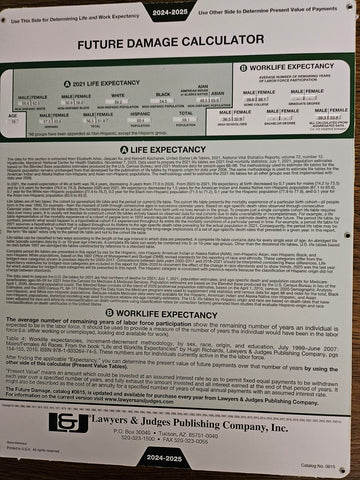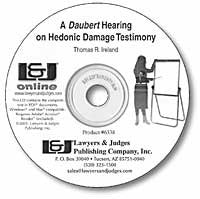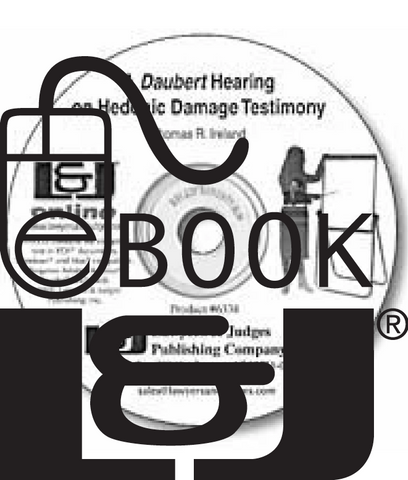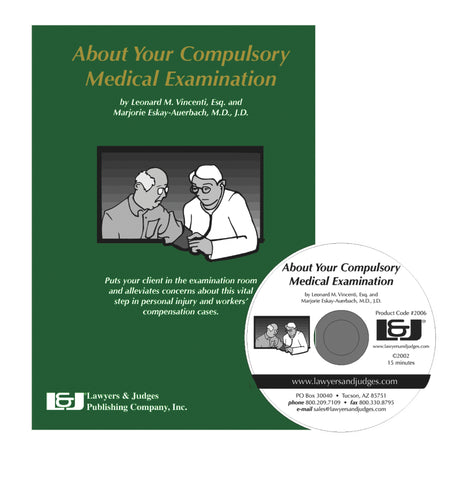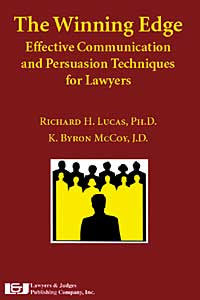
Winning Edge: Effective Communication and Persuasion Techniques for Lawyers
- Author: Richard H. Lucas, K. Byron McCoy
- ISBN 10: 0-913875-38-4
- ISBN 13: 978-0-913875-38-4
- Copyright Date Ed: June 15, 1999
- Pages: 220 pages
- Binding Information: Paperback
- Size: 6 ✕ 9 Inches (US)
With this easy-to-read book, you will discover the hidden keys that turn a good lawyer into a great lawyer. If you want to improve your effectiveness in the courtroom, establish genuine rapport with a jury, and achieve maximum results in litigation, then you will want The Winning Edge for your reference library.
You will learn about the four essential elements of successful communication, the keys to establishing rapport, the importance of metaprograms, and enhancing your performance--into the winning performance. You can implement these successful strategies immediately. You may be assured that accomplished lawyers utilize this knowledge where and when it counts--during opening and closing arguments, witness and client interviews, jury selection and observation, and direct and cross examinations. Utilize this book to learn these advanced and proven techniques in the courtroom. With The Winning Edge, you will know why and how these techniques work and achieve maximum results for your clients in the courtroom time and time again.
This book is also available as an eBook. Click here to purchase and download:
Topics covered:
- Influence and persuasion
- Convincing the jury
- Asking the right questions
- Establishing trust, credibility and rapport
- Negotiation and mediation
- Human communication processes
- Gender differences in communication
- Evaluation and decision skills and techniques
- Communication and the future of the legal profession
- Becoming the lawyer you want to be
Table of Contents
Dedication
Foreword
Preface: A Question of Ethics
Acknowledgments
Introduction
Chapter 1: How People Process Communication
1.1 Effective Communication: Luck or Learned?
1.2 What Good Communicators Have in Common
1.3 Basic Concepts in Understanding Communication
1.4 How Listeners React When We Say Something
1.5 Representational Systems
1.6 Visual, Auditory, and Kinesthetic Systems
1.7 Eye Accessing Cues
1.8 Surface Structure, Deep Structure: Meanings Behind Language
1.9 Embedded Questions
1.10 "Is This About . . . ?"
1.11 The A, B, C, Ds of Effective Communication
1.12 Exercise: Questions to Ask
1.13 Exercise: Embedded Questions
1.14 Exercise: Noticing Representational Systems
1.15 Exercise: Four Essential Elements of Effective Communication
1.16 Exercise: "Is This About . . . ?"
Chapter 2: How to Establish Trust, Credibility, and Rapport
2.1 Rapport
2.2 How to Establish and Maintain Rapport
2.3 Rapport in the Lawyering Process
2.4 How People Express Themselves
2.5 Four Keys to Establishing Rapport
2.6 Representational Systems
2.7 Effect of Mismatching Representational Systems
2.8 Effect of Matching Representational Systems
2.9 Listening for Predicates
2.10 Establishing Rapport with Juries and Other Groups
2.11 Backtracking
2.12 Getting the "Yes Response"
2.13 Different Words Are Different Worlds
2.14 Mimicking or Mocking?
2.15 Matching Tonality
2.16 Mismatching Tonality
2.17 Matching Tonality
2.18 Mirroring Gestures
2.19 Criteria Words
2.20 Mirroring Physiology
2.21 Exercise: Identifying Preferred Representational Systems
2.22 Exercise: Mismatching Preferred Systems
2.23 Exercise: Matching Tonality
2.24 Exercise: Noticing Criteria Words
Chapter 3: How to Ask the Right Questions
3.1 Getting the Information You Need
3.2 The First Step: Listen
3.3 Generalization
3.4 Deletion
3.5 Distortion
3.6 Clarifying/Challenging
3.7 Four Types of Deletions
3.8 Universal Quantifiers
3.9 Necessity or Impossibility
3.10 Cause and Effect
3.11 Complex Equivalents
3.12 Lost Performatives
3.13 Exercise: Clarifying/Challenging
3.14 Exercise: Generalizations, Deletions, and Distortions
Chapter 4: How People Evaluate and Decide
4.1 What You See Isn't Always What You Get
4.2 Deep Structure Revisited
4.3 Dangerous Assumptions
4.4 Metaprograms
4.5 A List of Metaprograms
4.6 The Pervasiveness of Metaprograms
4.7 How to Elicit Metaprograms
4.8 Variations on Basic Questions
4.9 Using Metaprograms
4.10 Exercise: Ascertaining Your Own Metaprograms
4.11 Exercise: Ascertaining Another Person∂s Metaprograms
Chapter 5: How to Influence and Persuade
5.1 A Quick Review
5.2 Embedded Questions
5.3 Embedded Comments
5.4 Embedded Commands
5.5 Presuppositions
5.6 And/But
5.7 Conditional Close
5.8 Exercise: Embedded Questions, Comments, and Commands
5.9 Exercise: Presuppositions
5.9 Exercise: Conditional Close
Chapter 6: How Men and Women Communicate Differently
6.1 A Linguistic Gender Gap
6.2 Anecdotal and Common Evidence
6.3 Linguistic Evidence
6.4 Examples of Differences
6.5 Attorney-Client Interactions
6.6 Implications for Attorneys
Chapter 7: How to Become the Lawyer You Want to Be
7.1 Break States
7.2 Communicating with Yourself
7.3 Blame Frame
7.4 Outcome Frame
7.5 Anchoring Yourself to Resourceful Physiology
7.6 Reframing Your Internal Questions
Chapter 8: How to Tell a Convincing Story
8.1 Convincing Opening Statements and Closing Arguments
8.2 The Art and Science of Story Telling
8.3 Primacy and Recency
8.4 The Hook
8.5 "This is about . . ." and the Core Question
8.6 Representational Systems
8.7 Embedded Questions, Comments, and Commands
8.8 Presuppositions
8.9 And/But
8.10 Creating and Using Anchors
8.11 The Use of Analogy
Chapter 9: How to Get the Information You Need
9.1 Professional Information Gatherers
9.2 Initial Client Interviews
9.3 Occurrence Witness Interviews
9.4 Deposition Questioning
9.5 Voir Dire Examination
9.6 Direct Examination of Occurrence Witnesses
9.7 Direct Examination of Expert Witnesses
9.8 Cross-Examining Occurrence Witnesses
9.9 Cross-Examining Expert Witnesses
Chapter 10: How to Negotiate and Mediate
10.1 Alternatives to Litigation
10.2 Negotiation Defined
10.3 Competitive Negotiation
10.4 Noncompetitive Negotiation
10.5 Principled Negotiation
10.6 Strategies for Principled Negotiation
10.7 Mediation Defined
10.8 Mediation Techniques
10.9 Listen, Backtrack, and Be Flexible
Chapter 11: Communication and the Future of the Legal Profession
11.1 Lawyer Professionalism: Do We Measure Up?
11.2 Personal Reflections: Why We Wrote This Book
11.3 Experiential Learning
11.4 Public's Image of Attorneys
11.5 Communication, Personal Growth, and Professional Concerns
11.6 Lawyering in the Twenty-first Century
About the Authors
Index

